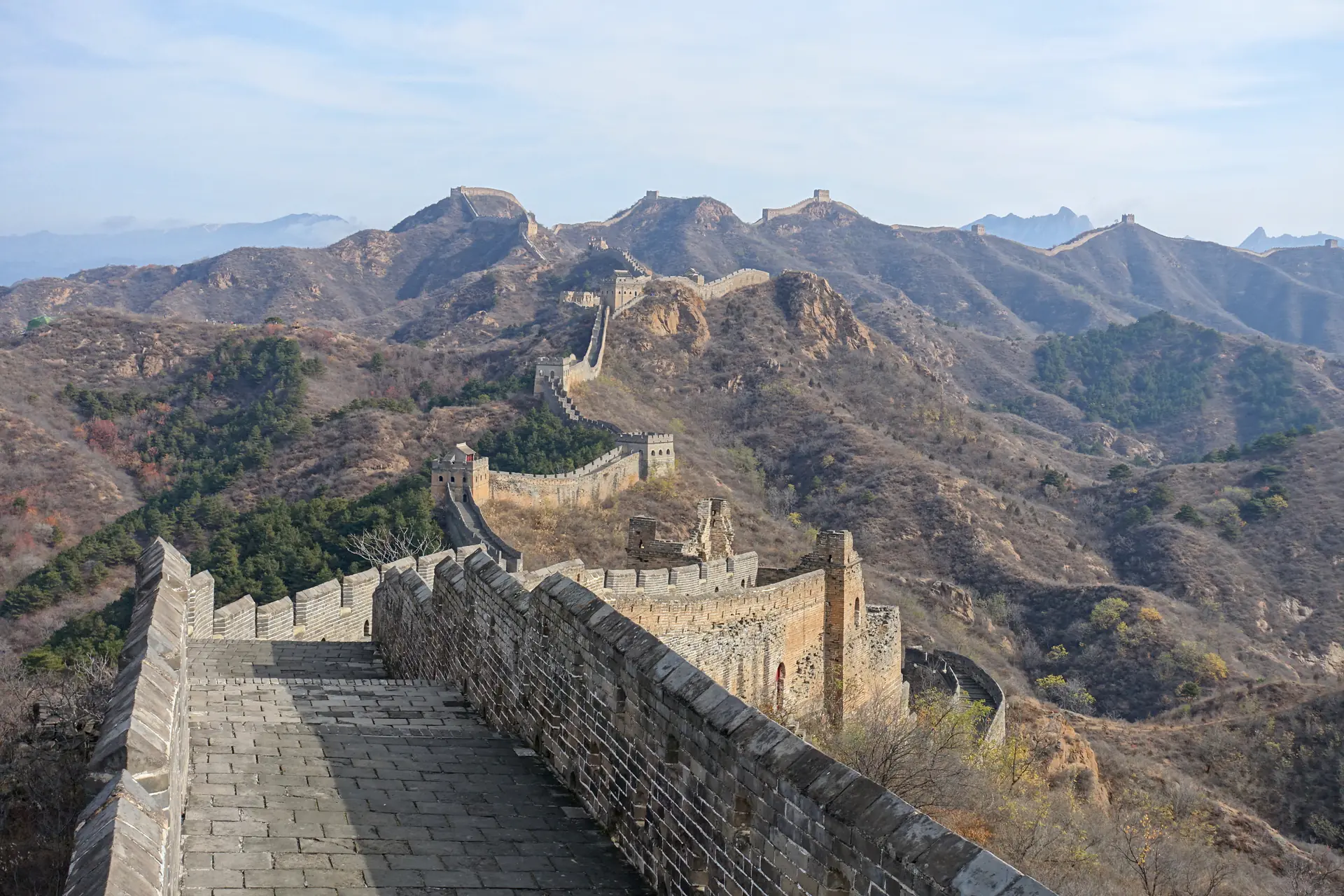
China's Great Wall and Ming Dynasty Defensive Fortifications
21,000-Kilometre Fortification Through Desert and Mountains
About This Site
The Great Wall stands as the world's most extensive military defence structure and humanity's largest architectural achievement, stretching over 21,000 kilometres across northern China's diverse landscapes. Built from the 3rd century BC through the 17th century AD, with its most iconic sections constructed during the Ming Dynasty (1368-1644), this monumental fortification demonstrates extraordinary engineering ingenuity and strategic military planning. As a UNESCO World Heritage Site, the Great Wall provides outstanding testimony to ancient Chinese civilisation whilst showcasing remarkable adaptation to challenging terrain, serving as an enduring symbol of China's historical strength and cultural perseverance. The fortification system incorporated watchtowers, garrison stations, and signal systems across mountains.
Why It Matters
The Great Wall represents an absolute masterpiece of military architecture and strategic defence planning, providing exceptional evidence of ancient Chinese imperial power and engineering capabilities whilst serving as an outstanding example of how successive civilisations protected their territories through massive construction projects spanning two millennia.
Iconic Wall Sections
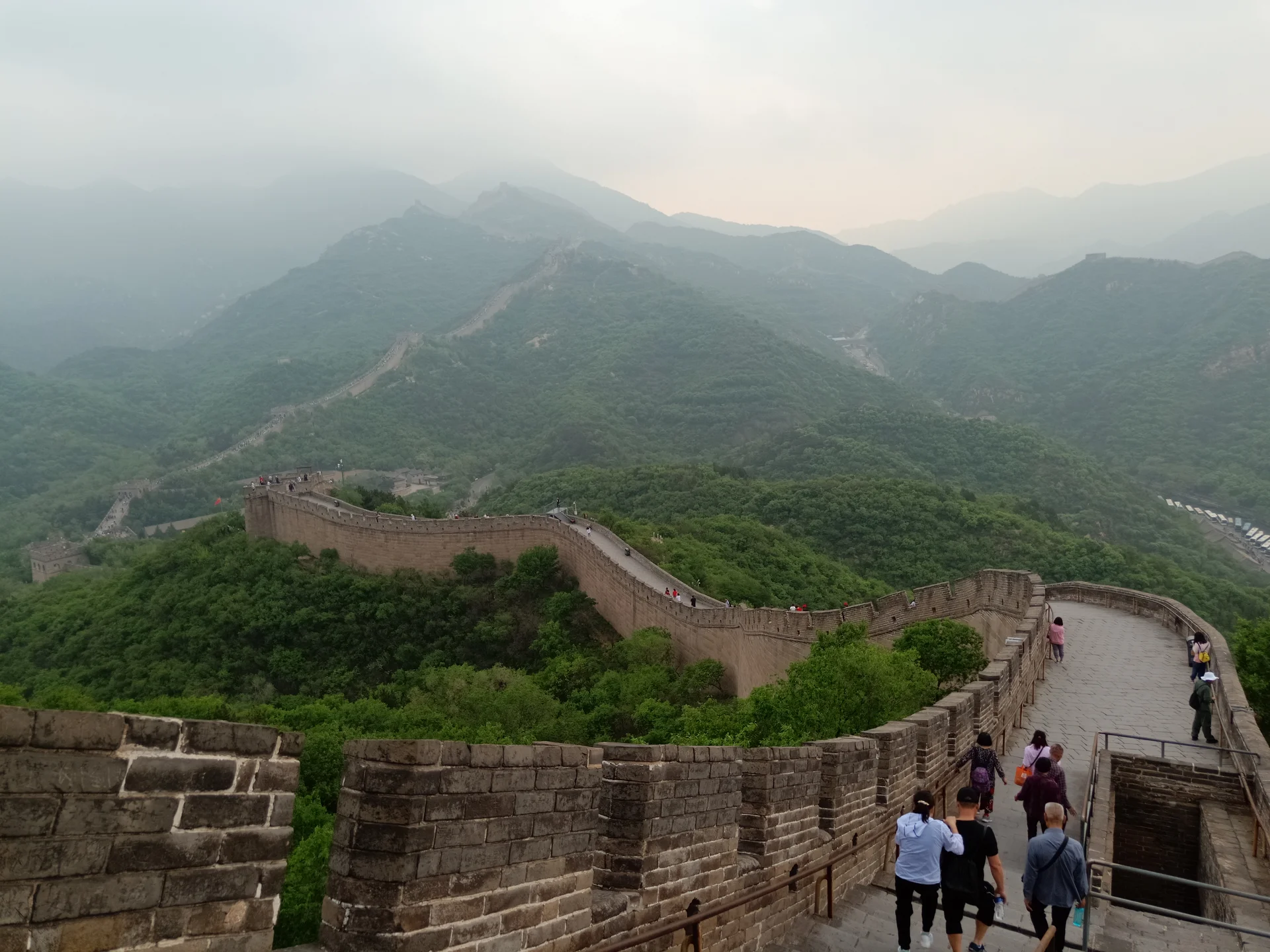
Badaling Great Wall
Badaling represents the most visited and accessible Great Wall section, located just 70 kilometres northwest of Beijing. Restored during the 1950s and 1980s, this Ming Dynasty fortification showcases typical defensive architecture with brick and stone construction, crenellated battlements, and strategic watchtowers offering commanding views. Built in 1505, Badaling served as crucial northern defence for the imperial capital. The section features excellent infrastructure including cable cars, making it ideal for visitors with limited time or mobility. Whilst crowds can be substantial during peak seasons and weekends, early morning visits provide more intimate experiences.
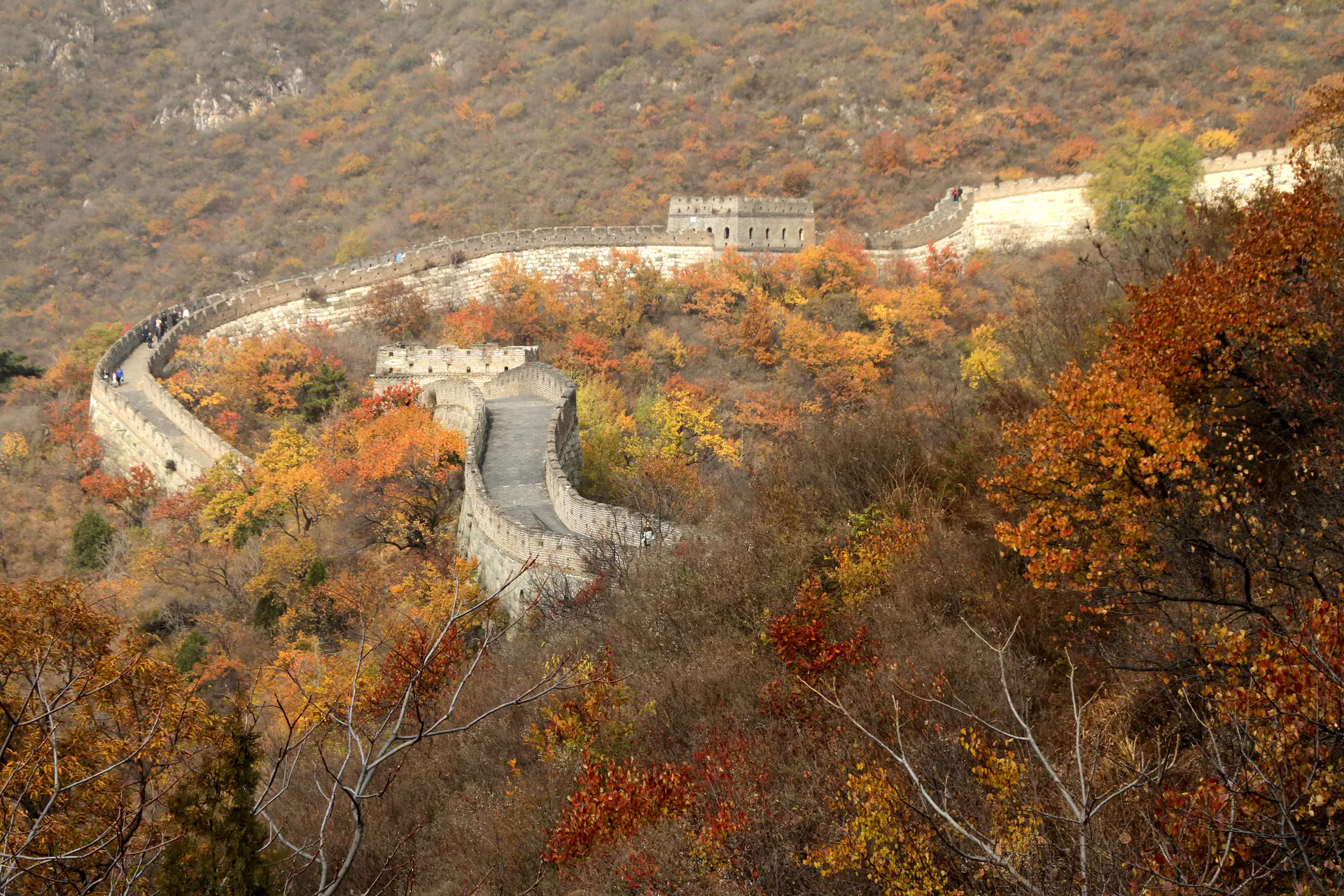
Mutianyu Great Wall
Mutianyu offers perfect balance between restoration and authentic atmosphere, stretching 5.4 kilometres with 23 distinctive watchtowers through pine-covered mountains. Built during the Northern Qi Dynasty (550-557) and extensively rebuilt under Ming supervision, this section features unique architectural elements including three-sided battlements providing enhanced defensive capabilities. The wall averages 7-8 metres in height with watchtowers spaced approximately every 100 metres for optimal coverage. Visitors appreciate Mutianyu's excellent preservation combined with fewer crowds than Badaling, whilst infrastructure including cable car ascent and thrilling toboggan descent adds modern convenience. Surrounding natural beauty makes this the preferred choice for spectacular views.
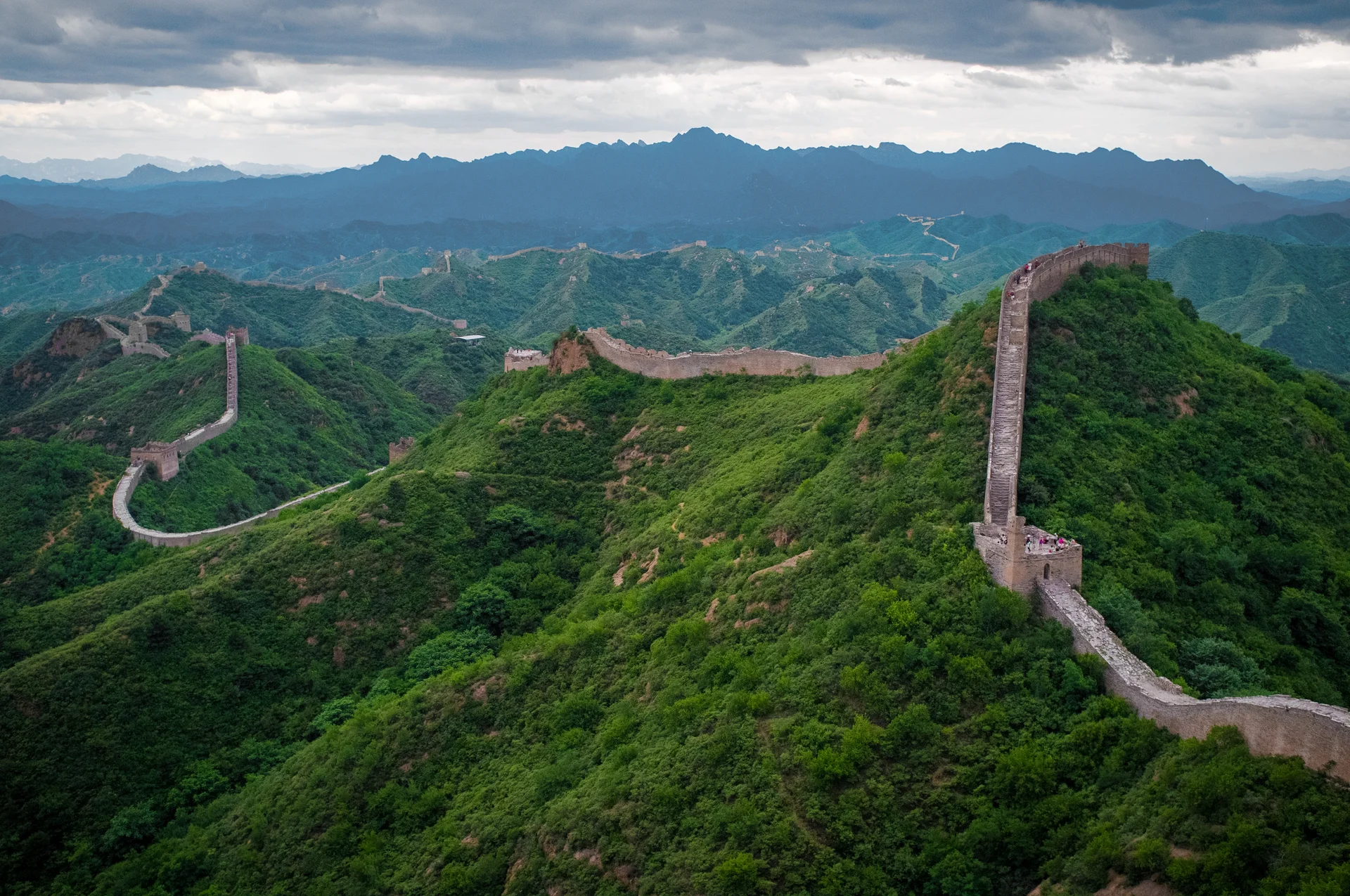
Jinshanling Great Wall
Jinshanling represents the Great Wall at its most dramatic and authentic, featuring 10.5 kilometres of mostly unrestored Ming Dynasty fortifications with 67 watchtowers across challenging mountain terrain. Built between 1570-1577 under General Qi Jiguang, this section showcases sophisticated military architecture including diverse watchtower designs strategically positioned for overlapping fields of fire and communication. Unlike heavily restored sections, Jinshanling retains original construction details including eroded brickwork revealing authentic building techniques. The remoteness ensures minimal crowds whilst providing exceptional photography opportunities, especially during golden hour when dramatic lighting illuminates the serpentine wall across rugged ridges. Serious hikers appreciate challenging terrain and rewarding panoramas.
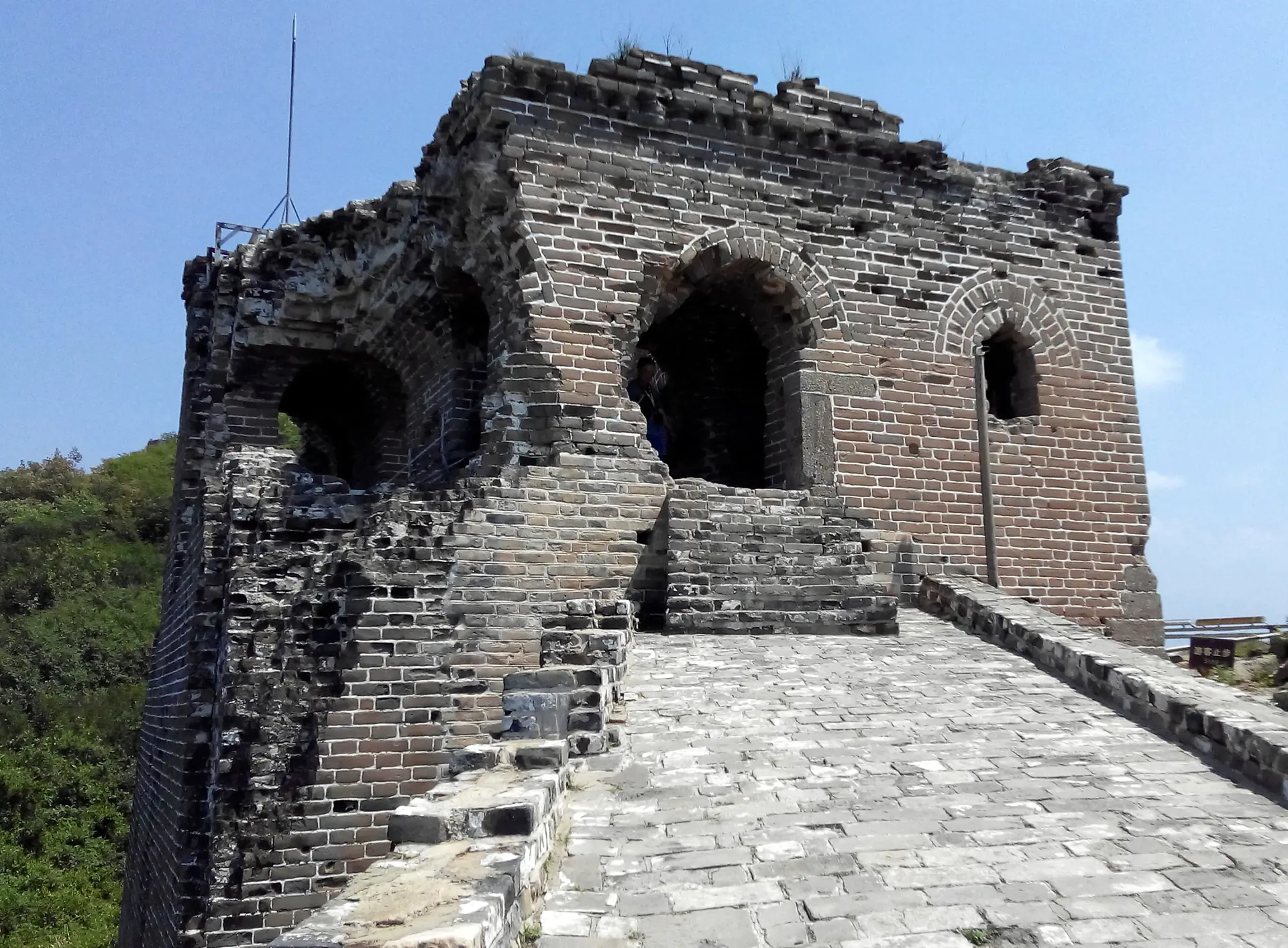
Watchtower Architecture
The Great Wall's watchtowers represent sophisticated military architecture adapted to diverse tactical requirements across the fortification system. These structures typically rise two or three storeys above the wall, featuring arrow windows, signal platforms, and garrison quarters for soldiers. Ming Dynasty engineers designed multiple watchtower styles including hollow enemy towers (kongxin tai) with internal garrison space and solid watchtowers (shixin tai) purely for observation and signalling. Strategic placement approximately every 100-200 metres ensured overlapping fields of fire whilst enabling rapid communication through beacon fire signals. Interior facilities included weapon storage, food supplies, and sleeping quarters supporting permanent garrisons. The architectural variety reflects local defensive requirements with elaborate structures at strategic passes.
Location & Planning
Badaling and Mutianyu sections accessible from Beijing via tour buses or public transport (2 hours). Purchase tickets online in advance. Cable cars available at popular sections. Jinshanling section requires private transport. Bring water, snacks, and appropriate footwear for steep terrain.
Loading map...
Frequently Asked Questions
The Great Wall is humanity's largest military defence structure, stretching over 21,000 kilometres across northern China. Built from the 3rd century BC through the 17th century AD, it represents an extraordinary engineering achievement protecting Chinese civilisation from northern invasions.
Construction spanned over 2,000 years across multiple Chinese dynasties. Emperor Qin Shi Huang unified earlier walls around 221 BC, whilst the iconic brick and stone sections tourists visit today were built during the Ming Dynasty (1368-1644).
Badaling (70km, 1.5 hours) offers easiest access via public bus or tour. Mutianyu (73km, 2 hours) provides cable car access and fewer crowds. Jinshanling (130km, 2.5 hours) suits adventurous hikers. Book tickets online or join organised tours.
April-May and September-October offer ideal weather with comfortable temperatures and clear visibility. Arrive early morning (07:00-08:00) for fewer crowds and optimal photography lighting conditions. Avoid national holidays when Chinese tourism peaks with significantly increased visitor numbers.
Yes, all major sections require entrance tickets. Book online through official websites to avoid queues: Badaling (40-45 CNY), Mutianyu (40 CNY plus optional cable car), Jinshanling (65 CNY). Bring passport for verification at entrance gates.
Wear sturdy hiking boots with excellent grip for steep, uneven stone steps. Bring layers for changeable mountain weather, sun protection including hat and sunscreen, and comfortable clothing allowing free movement. Avoid sandals or smooth-soled shoes.
UNESCO World Heritage Criteria
Inscribed in 1987, this site meets 5 of UNESCO's 10 criteria for Outstanding Universal Value
Criterion (i): Masterpiece of human creative genius
The Great Wall represents an absolute masterpiece of human creative genius through its unprecedented scale spanning over 21,000 kilometres, sophisticated defensive architecture adapting to diverse terrain from mountains to deserts, and engineering innovations including beacon tower communication systems enabling rapid signal transmission across vast distances.
Criterion (ii): Interchange of human values
The Great Wall facilitated significant interchange of human values along the ancient Silk Road, where Chinese, Central Asian, and Middle Eastern cultures exchanged goods, technologies, and ideas, whilst the wall's construction techniques influenced defensive architecture throughout East Asia for centuries.
Criterion (iii): Testimony to cultural tradition
The Great Wall provides exceptional testimony to Chinese imperial civilisation across two millennia, representing the Ming Dynasty's political power and organisational capacity to mobilise millions of workers whilst embodying China's historical determination to defend territorial integrity against northern invasions throughout successive dynasties.
Criterion (iv): Outstanding architectural/technological ensemble
The wall exemplifies outstanding architectural achievement through masterful integration with natural topography, sophisticated fortification systems including watchtowers, garrison stations, and beacon towers, and construction techniques adapting local materials from fired brick to rammed earth across dramatically varied geographical conditions.
Criterion (vi): Associated with events/traditions/ideas/beliefs/artistic works
The Great Wall remains directly associated with Chinese national identity and the concept of national defence, representing ideas about territorial sovereignty, cultural distinction between agricultural and nomadic societies, and the immense human sacrifice required for monumental construction that profoundly shaped Chinese historical consciousness.
Historical Context
Early Walls (7th-3rd century BC)
Various northern kingdoms built defensive walls of rammed earth and wood to protect against nomadic invasions from the steppes. These early fortifications established the precedent for unified defence systems that would later become the Great Wall, demonstrating strategic military thinking across multiple states.
Qin Dynasty Unification (221-206 BC)
Emperor Qin Shi Huang ordered connecting and extending existing walls into a unified defence system stretching from the Yellow Sea westward across northern China. This massive project created the first "Great Wall" concept, employing hundreds of thousands of workers to link disparate fortifications into one continuous barrier.
Han Dynasty Expansion (206 BC - 220 AD)
The Han Dynasty extended the wall westward to protect vital Silk Road trade routes from raids. Engineers built sophisticated watchtowers and beacon systems enabling rapid communication across vast distances, whilst garrison fortresses supported permanent military presence along vulnerable sections.
Ming Dynasty Reconstruction (1368-1644)
The most iconic sections were rebuilt in brick and stone with sophisticated military architecture, strategic watchtowers, and garrison fortresses defending against Mongol threats. This Ming wall represents the structures tourists visit today, featuring advanced defensive capabilities and impressive engineering that has survived centuries.
Modern Era (1949-present)
Significant restoration efforts since the 1950s preserved crucial sections for future generations, whilst UNESCO recognition in 1987 brought international attention to conservation needs. Ongoing preservation programmes balance tourism development with historical integrity, employing modern techniques to stabilise deteriorating sections whilst maintaining authentic character.
Conservation & Protection
Current Conservation Status
The Great Wall faces significant challenges from natural erosion, tourism impact, and development pressures, with approximately 30% of Ming Dynasty sections in poor condition requiring urgent conservation intervention.
Conservation Challenges
- Natural erosion from wind, rain, and vegetation gradually degrading unrestored sections
- Tourism pressure causing wear on popular sections like Badaling with millions of annual visitors
- Urban development and agricultural activity threatening wall sections near populated areas
- Theft of bricks and stones from remote sections for construction materials
Active Conservation Efforts
- Comprehensive survey and documentation project mapping entire fortification system using satellite imagery and ground surveys
- Selective restoration prioritising structurally endangered sections whilst carefully preserving authentic historical character
- Visitor management systems controlling daily numbers at popular sections to reduce wear
- Local community engagement programmes training villagers as conservation guardians protecting remote sections
Image & Content Attribution
Research & Content Sources
Photography & Visual Media
Last updated: 10 October 2025